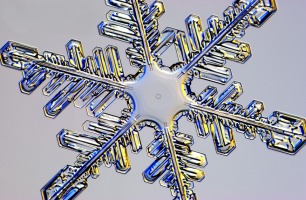The Stibiconite Group of minerals includes some very rare species as members. Its namesake, stibiconite, is the most common mineral of the group and is far from being considered common. Although the common structure of this group is isometric, a symmetry system that has produced minerals that are prolific in large well formed crystals, this particular group of isometric minerals do not. Typical crystal habits include masses, crusts and pseudomorphs. There is some doubt as to the placement of these minerals in the isometric system.
Members of the group have the general formula M1 - 2X2O6(O, OH, F). The M can be any of several large metal ions with a positive 2 or 3 charge. The M ions can be lead, calcium, potassium, silver, bismuth, sodium, manganese, iron, copper and/or antimony. The X represents smaller ions such as iron (+3), antimony (+5) and/or titanium (+4). When the formula has two M's instead of one, then the M has a positive two (+2) charge. The combined positive four charge instead of a single positive three charge needs to be balanced. It is balanced by the hydroxides or fluorines being replaced by an oxygen giving an extra negative charge. A similar balancing act must take place with the differently charged ions in the X position.
Although crystals are rare, the pseudomorphs produced by these minerals are sometimes astounding. A pseudomorph is an atom by atom replacement of one mineral's chemistry to form another completely different mineral. The process leaves the crystal shape of the replaced mineral intact. Pseudomorph means false (pseudo) shape (morph).
These are the minerals of the Stibiconite Group:
- Bindheimite (Lead Antimony Oxide Hydroxide)
Bismutostibiconite (Bismuth Antimony Iron Oxide)Partzite (Copper Antimony Oxide Hydroxide)Romeite (Calcium Sodium Iron Manganese Antimony Titanium Oxide Hydroxide)Stetefeldtite (Silver Antimony Oxide Hydroxide)- Stibiconite (Antimony Oxide Hydroxide)






